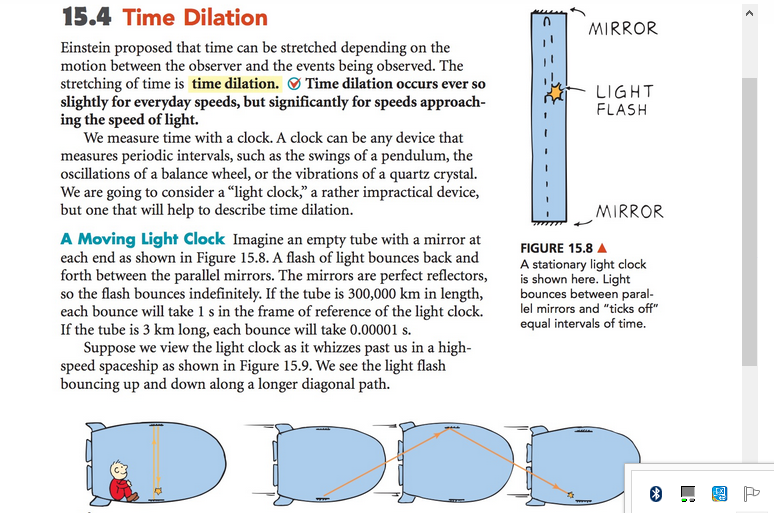Please please help me out. This is a question about time dilation. Thanks!?!
- Provide the time dilation equation found in Section 15.4 of the text. Explain each step of the derivation.

- Provide the time dilation equation found in Section 15.4 of the text. Explain each step of the derivation.

1 Answer
Let
Let
Let
Let
As the beam is travels toward and strikes the first mirror, the moving observer sees the light-pulse travel a distance
The stationary observer sees the vehicle move to the right a distance
The stationary observer sees the light-pulse travel diagonally a distance
We know that the distances, a, b, and d form a right triangle with d being the hypotenuse:
Substitute for a, b, and d:
Subtract
Factor out
Divide both sides by
Multiply the right side by 1 in the form of
Use the square root on both sides:
The above is one form; the other form is:
